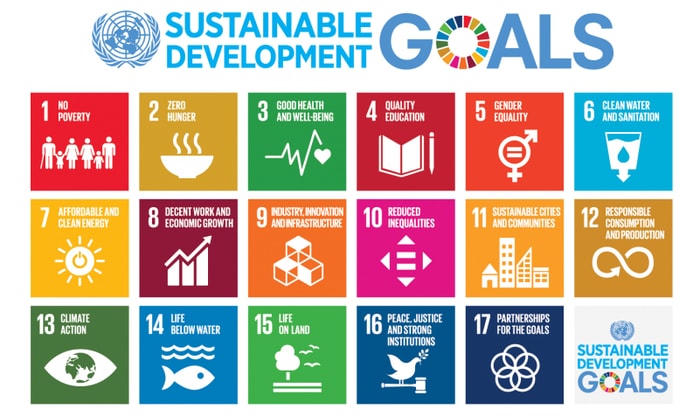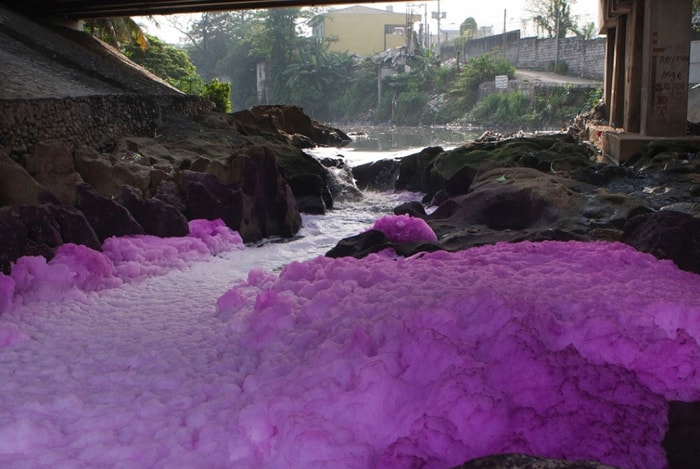
Top International and NGOs Working to Regulate the Fashion Industry
We’ve heard the statistics – the fashion industry emits 8-10% of global greenhouse gas emissions, and is responsible for producing 20% of all global waste water. These percentages are only projected to increase as the industry continues to grow. There is no question that the fashion industry is a primary polluter that needs to change its ways to become more sustainable. But there is debate around how such change theoretically should and practically will come about. It becomes, ‘to regulate or not to regulate?’, and if ‘to regulate’, how?
Regulation is necessary if we are seeking concrete change to hold the entire fashion industry socially and environmentally accountable. However, many national governments are opposed to imposing regulation on fashion (or on any industry for that matter). So, one of the most promising and realistic opportunities for oversight emerges through the world’s international organisations and non-governmental organisations (NGOs).
International regulatory bodies come prepared with the proper foundations to address the fashion industry’s total impact and oversee its sprawling production networks. Many international organisations also have an established framework and existing focus on mitigating climate change, protecting human rights and carrying out social and environmental justice. Fashion industry specific agreements and pacts often run parallel to these larger initiatives. In turn, this positioning gives fashion agreements a distinct sense of purpose in accounting for their own impact as the world collectively responds to pressing global problems.
While the agreements that international organisations and NGOs produce may be limited in enforceability, they undoubtedly stand as some of the most promising regulatory initiatives for the fashion industry in the absence of government regulation. Here are three leading organisations working to regulate the fashion industry and promote sustainability on a global scale.
The United Nations: The United Nations (UN) has emerged as theorganisation for global governance, and they have notably set the agenda and developed the framework to address climate change.The Paris Agreement, or the UN’s mammoth agreement to limit global warming to two degrees Celsius by the end of this century, takes an utmost priority with reducing carbon emissions. Because the fashion industry has such a large carbon footprint, the UN recently recognized that fashion would need to be involved and regulated specifically with initiatives that fall under the Paris Agreement. One such agreement is the Fashion Industry Charter for Climate Action, which sets out to reduce greenhouse gas emissions industry-wide by 30% before the target year 2030. This charter sets out principles to boost energy efficiency, transition to low-carbon transport and implement tracking measures to boost accountability. It is the result of partnerships between signatories (i.e. fashion brands like Stella Mccartney and supporting NGOs) and the UN, who facilitate the charter’s implementation.
A second effort to reform the fashion industry is the UN Alliance for Sustainable Fashion, which carries out the UN’s Sustainable Development Goals (SDGs) as they apply to this industry. SDG’s are a series of targets intended to advance social and environmental principles, such as protecting human rights, empowering women, and promoting energy efficiency. The alliance works to promote collaboration among fashion brands and further the sharing of knowledge in an industry often characterised by its competitiveness. It also sets out pathways for coordination between UN bodies to ensure that no dimension of the fashion industry is overlooked.

The G7 Fashion Pact: The G7 Fashion Pact was born out of a joint effort between Emmanuel Macron, the President of France, and his appointee, Francios-Henri Pinault, who is the CEO and Chairman of the Kering Group. The pact was presented in 2019 at the G7 Conference in Biarritz, France. G7 refers to the grouping of the so called largest global economies, and it serves as a forum for heads of state to come together and discuss solutions to global problems such as inequality, global security, and now fashion too. The G7 Fashion Pact creates a coalition between private and public leaders to foster innovation and collaboration, and coordinate the implementation of social and environmental solutions for the fashion industry.
Similar to the UN’s Fashion Charter, it includes quantitative targets to lower the fashion industry’s carbon footprint. However, it distinctly goes beyond carbon emissions with goals to reduce fashion’s impact on biodiversity and protect the world’s oceans by eliminating the use of single-use plastics. The pact aims to involve 20% of the world’s fashion industry measured by product volume.
Greenpeace: Images of rivers and streams running with bright pink, red or purple streaks have become prominent visuals of one of the most harmful impacts of the fashion industry – water pollution and chemical toxicity. This is exactly what the non-governmental organisation Greenpeace sets out to address in their Detox My Fashion Campaign. While Greenpeace has been active in advocating for reforms in the fashion industry through numerous attention-grabbing techniques, such as boycotts, leading demonstrations, and conducting research/data collection, their Detox My Fashion Campaign specifically aims to reduce the fashion industry’s use of toxic chemicals and halt the dumping of those chemicals into waterways.
By leading investigations, publishing reports, and using “name and shame” tactics, Greenpeace has secured commitments from major fashion brands like Inditex and H&M to discontinue the use of many harmful chemicals. Today, seven years after Greenpeace started this campaign,they have seen drastic reductions in the use of hazardous chemicals on behalf of all 80 companies that pledged to phase them out. The Detox My Fashion campaign is considered a monumental success, underscoring just how impactful NGOs can be in making the industry more sustainable and accountable.

Image Sources:
© Gigie Cruz-Sy / Greenpeace
Header Image:
© Lance Lee / Greenpeace








